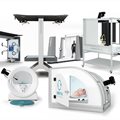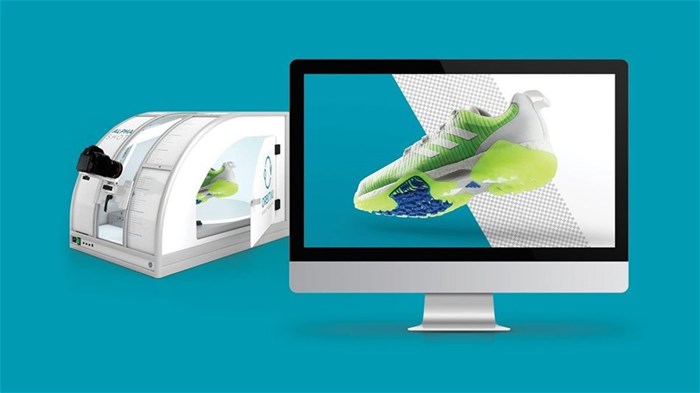
How automated product photography can accelerate your brand

What’s central to the burgeoning e-commerce industry is experience, and this rests heavily on visual content, which undeniably includes product photography. New research shows that if your digital experience doesn’t hit the market with customers, 54% could head to your competitors. Digital, of course, includes photography and all the product information and copy associated with your product as the customer makes their way through your funnel to the point of purchase.
Image volumes increase, rapidly
The pain points of e-commerce are well known, particularly after the past year of heightened online shopping, in both the consumer and business-to-business sectors. An emerging pain point is an increase in storage required by retailers, manufacturers and service providers, particularly those who have large, fast-evolving product and service catalogues. On Amazon, for instance, small- and medium-sized retailers sell as many as 4,000 items a minute. Each item requires photography of a certain standard and quality to attract custom and to propel sales forward in the funnel.
In the past, traditional photo studios were used in retail and consumer sectors, and photography was frequently outsourced to ensure compelling photos formed part of the overall digital experience - getting the right product with the right information to market quickly and efficiently so that it made part of a compelling offer.
Automation is an accelerator
But just as technology has contributed to improved automation in fashion, beauty, automotive and other consumer sectors, product photography has evolved for the better. But before we get to the promised land, let’s look at all the pain points of modern product photography.
- The problem with large image volumes. Products and services that are listed in retail ecosystems like Amazon require manifold photos to visually showcase what is being sold. This rich media content, photography and even video takes space to catalogue correctly and store for use.
- Unparalleled visual consistency and quality. Sophisticated customers now want as much product information as they can get and, in part, this means that retail products and services must be displayed professionally.
- Comply with set standards of professionalism. Huge retail ecosystems like Takealot and Amazon have specific standards that must be complied with. To list products therefore must be on a white background, be professionally lit and framed and 85% of the item must appear in the image.
- Speed to market. Being first to market with new products and services is a distinct advantage in a retail world in which novelty is everything. It doesn’t make sense to use traditional studios for product photography when automation enables faster and more compelling visualisation.
- Growth and scalability. One of the biggest reasons that large retailers and brands with volume opt for automated product photography technologies is that automation enables growth. Automated product photography is currently the fastest, best way to ensure volumes, quality and the ability to scale in rapid time.
But before speaking about all the benefits of automated product photography, let’s look at the big differences between traditional and digital photography that are used to robotise or automate product photography.
What is automated product photography?
At the heart of any photo automation setup or solution are the hardware and the software. The outer shell, the physical booth is the hardware. Typical this will look like the shell of a photo studio or a studio cabin.
These automated studios come in various sizes, so if you’re shooting a piece of jewellery or a computer component or a pen, for instance, the booth is relatively small. But if you’re shooting a car or a motorbike or a model who is showcasing elegant clothing, the cabin will be more than big enough to accommodate the product.
This hardware and software setup arrives with at least one digital camera or a number of digital cameras that are integrated with the system and the software that drives this system. The hardware also includes lighting and a console or place where the operator of the system can drive it.
What’s critical to automated product photography is the integrated software that controls it. This software takes the shoot from the beginning of the content production journey, right through to post-production and publishing.
Accessibility and inclusion are built into automation, which means that these systems are incredibly easy to use. A production assistant could easily drive the system and produce compelling content that meets exacting standards.
An example of this is the software and photo automation that makes it easy to remove backgrounds from images without any human intervention. In the old days, graphic designers or image retouchers would be used to deep etch or remove the background in a way that still looks natural.
This is the beauty of automated photosystems. In the old days, a traditional photoshoot would mean hiring a photographer, studio and equipment together with assistants and models, make-up artists and the like. Once the photography component of the project is complete then all those images still need to go to a team of retouchers for post-production. Thankfully, today all the work that it takes to produce compelling images can be done by a single, trained person. The good news is that the person only needs very basic photography skills to operate the system.
Automation in these systems extends to integration with all the major e-commerce systems that retailers in the field use, like Prestashop, Amazon, Magento, Shopify and WooCommerce. This means that automation is a soup-to-nuts process that takes you from content planning and creation right through to execution.
Given the usefulness of the automation photography process in manufacturing and retail it can help to improve outcomes and profits, here are three ways to use automated product photography in organisations to boost revenues by improving customer experience:
The three big benefits of automated product photography:
- Accelerate speed to market.
One of the biggest benefits of automated photography is the speed it delivers. With modern, automated systems, product photography for websites, Instagram or other e-commerce environments can be done in a matter of minutes, rather than days or weeks. Traditional photography often lives outside of integrated systems, but automated systems are integrated and work within digital systems, saving huge amounts of time and effort. Traditional photography can take weeks before an image appears on an online retail system but with automated systems, this can take mere seconds. Less time on production means that products don’t sit around in warehouses, which is expensive. Automated product photography gets items in the market and sells faster.
- Quality consistency.
A major benefit of automated solutions is that the setup is quick, but the output is consistent. Angles, lighting, setting and positioning are automated and stored as a template, allowing for easy replication, with exacting precision. Once a shoot has been done, it can be replicated again and again and again. Human error is eliminated by automation, but knowledge is kept in the system. What this means is continual virtue in the way of growth and improvement.
- Rich content is easily created and readily available.
In the old days of traditional photography, 360° overviews of products and spins were expensive and took time. Automation makes this easy and practical to produce because all it takes is a few single shoots on the system’s rotating turntable. From placing the product on the turntable to output takes about three minutes, so producing rich content is easier than ever before. Motorised rigs are integrated with cameras in automated systems so dynamic videos can be made in mere minutes. In a world where rich media drives conversions, this is a major benefit.
These three big benefits aside, cost efficiency and scalability are other considerations to ponder when thinking about making the switch from traditional to automated product photography. Because automated product photography is so easy to set up, it uses fewer resources and generates better quality and quantity output faster.
Automated product photography frees creative minds to focus on other aspects of e-commerce success like employee engagement and customer loyalty and care. In the highly competitive world of e-commerce, automated photography offers a clear business advantage because it maintains quality consistency, cuts costs and drives an acceleration in business.

Automation drives simplicity
Moreso, automated photography brings simplicity to a complex aspect of the business, leading to increased competitiveness.
After bringing the OrbitVu studios to South Africa, understanding its capabilities we are building a burgeoning business off the back of this, I’d love to show you the kind of business advantage product automation can bring. Please give me a ring or simply pop me an email, and let’s have a coffee and talk about how this works in practice.
If you’re keen on accelerating your business, I’ll be waiting for your call.
Craig Bellingham is founder and CEO of Studio[K]irmack. Studio[K]irmack is disrupting the visual content production experience with automation photographic and video technology. An entrepreneur who believes in building lasting relationships, Bellingham is passionate about making Cape Town a global e-commerce hot spot.
For more information:
Visit www.studiokirmack.co.za
Studio[K]irmack are sole agents for OrbitVu in ZA. www.orbitvu.co.za
Follow Studio[K]irmack on Instagram @studiokirmack, Facebook @StudioKirmack and on Twitter @StudioKirmack
- World-class e-commerce photography studio opens in Durban 4 Mar 2022
- Automate to elevate 7 Feb 2022
- 8 things to know about e-commerce photography in 2022 18 Jan 2022
- No business is too big or too small for Studio[K]irmack's automated image production solutions 2 Dec 2021
- Automation is key to growth for big and small e-commerce players 5 Jul 2021
Studio[K]irmackFrom design, to our creative innovation, and expert execution, Studio[K]irmack is your creative production partner. All things digital including E-Comm photography, video and engaging digital content. |

![Studio[K]irmack x Tshepo Jeans: Facilitating the future of South African e-commerce](https://biz-file.com/c/2008/570044.jpg)
